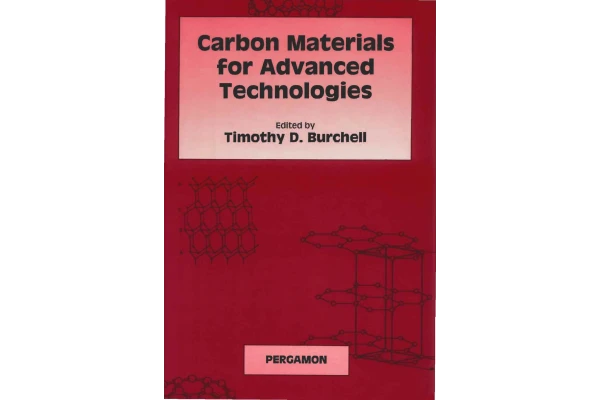
In 1994 the Oak Ridge National Laboratory hosted an American Carbon Society
Workshop entitled “Carbon Materials for Advanced Technologies”. The
inspirationfor this book came fiom that workshop. By late 1995 a suitable group
of contributors had been identified such that the scope of this book would be
sufficiently broad to make a useful contributionto the literature.
Carbon is a truly remarkable element which can exist as one of several allotropes.
It is found abundantly in nature as coal or as natural graphite, and much less
abundantly as diamond. Moreover, it is readily obtained from the pyrolysis of
hydrocarbons such as resins and pitches, and can be depositedfromthe vapor phase
by cracking hydrocarbon rich gases. In its various allotropic forms carbon has
quite remarkable properties. Diamond possesses the highest thermal conductivity
known to man and is prized as a gem stone. Both of these attributes result from the
high degree of crystal perfection andbond strengthin the diamond lattice. Graphite
possesses extreme anisotropyin the bond energies of its crystal lattice, resulting in
highly anisotropicphysical properties. The most recently discovered allotrope of
carbon, C,, or Buclctnmsterfullerene,has been the subject of extensive research, as
have the related carbon nanotubes and nanostructures.
Engineered carbons take many forms. For example, cokes, graphites, carbon and
graphite fibers, carbon fiber - carbon matrix composites, adsorbent carbons and
monoliths, glassy carbons, carbon blacks, carbon films and diamond llke films,
Many of these engineered carbon forms are discussedin this book, especially with
respect to their applicationsin technologically advanced systems. Moreover, this
book contains accounts of research into the uses of novel carbons. Modern day
applications of carbon materials are numerous. Indeed, the diversity of carbon
applications are truly astounding, and range from the mundane (e.g.,commodity
adsorbent carbons or carbon black), to the exotic (e.g.,hgh modulus carbon fibers
that enable the lightweight stiff composite structures used in airfiames and
spacecraft).
Chapter 1 contains a review of carbon materials, and emphasizes the structure and
chemical bonding in the various forms of carbon, including the four allotropes
diamond, graphite, carbynes, and the fullerenes. In addition, amorphous carbon
and diamond films, carbon nanoparticles, and engineered carbons are discussed.
The most recently discovered allotrope of carbon, i.e., the fullerenes, along with
carbon nanotubes, are more fully discussed in Chapter 2, where their structure
property relations are reviewed in the context of advancedtechnologies for carbon
based materials. The synthesis, structure, and properties of the fullerenes and
دیدگاه خود را ثبت کنید